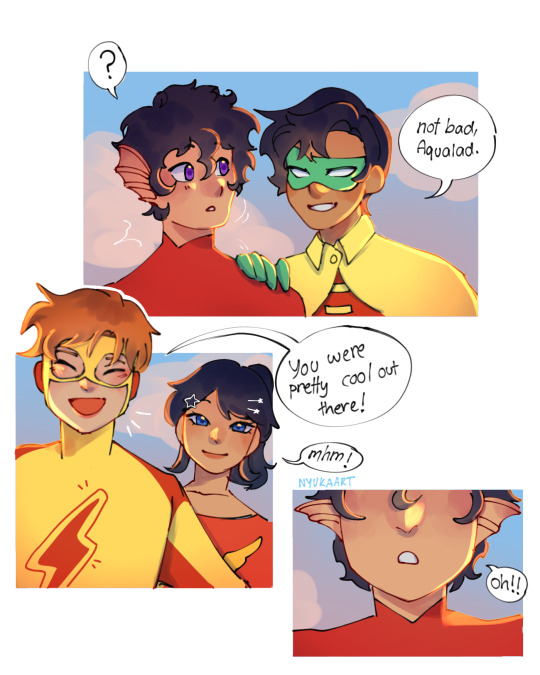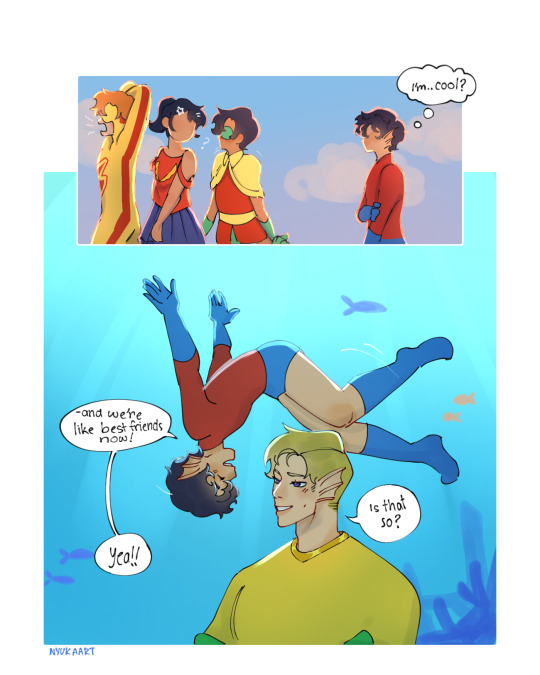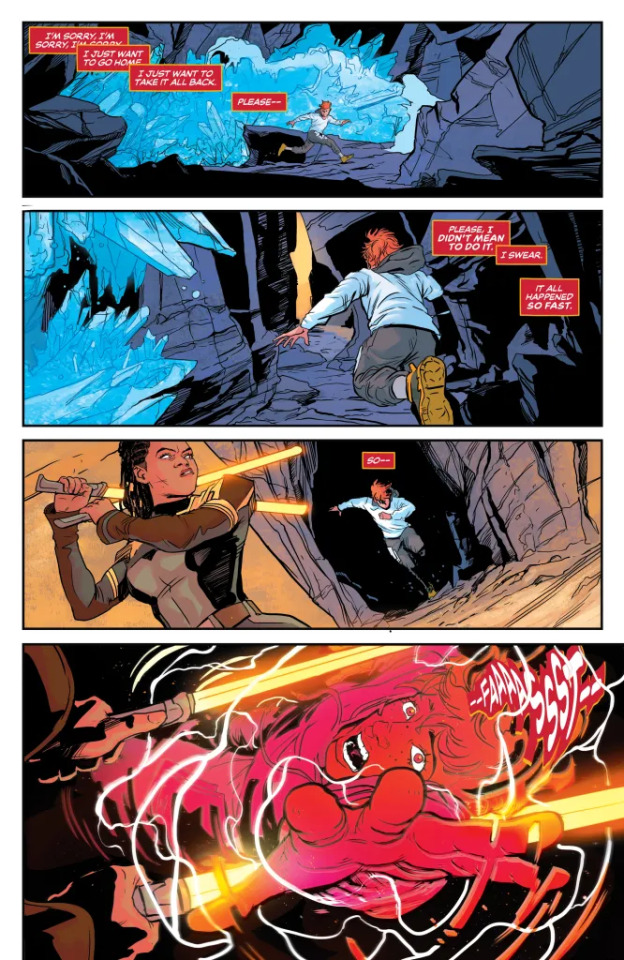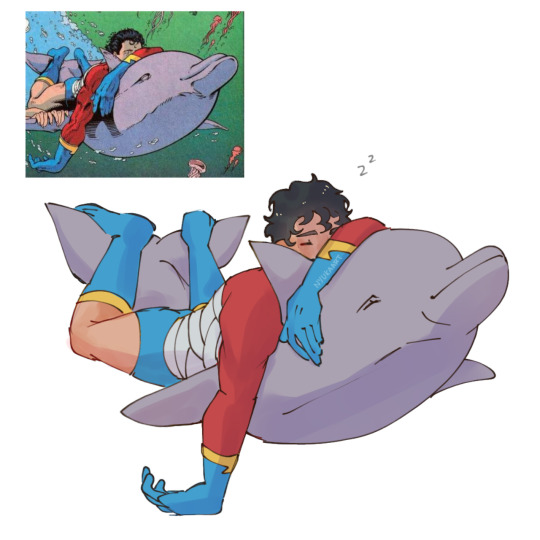You can call me Opti!! She/her. Mostly DC rn cause I'm a huge flashfam fan and fab five enthusiast TMNT, MP100 and Dr, OptimisticChocolate in AO3 (very creative ik)
Don't wanna be here? Send us removal request.
Text
Tomorrow

Absolute flash #2 drops on Wednesday

18 notes
·
View notes
Text
FRIENDSHIP ENDED WITH MISTER MIRACLE, now I am besties with Orion. Because man do I love Scott but I HATE drawing him in his costume. He looks amazing without it but I’ve been drawing his face for like an hour and I still don’t like it, but 5 minutes in with Orion and he looks: more expressive more, more stylized more like the character in question… everything is just better overall

It’s just a sketch but I bet it’ll look a lot better with half the amount of time… does anyone else struggle with Scott’s mask? Because I hate it jow my respect to all the artists that draw it. From now on I’ll only draw Scott without his mask on idgaf
#This is a preview from the drawing I’m making for fourthworldweek#About 5 days late :D#Aughhh#anyways#scott free#orion dc#fourth world#newgods2024
10 notes
·
View notes
Text
Absolute flash #2 drops on Wednesday

18 notes
·
View notes
Text
Hello. I’m a Comics reader. My hobbies include: Looking at an ever expanding reading list and feeling an insurmountable urge of dread.
362 notes
·
View notes
Text
one person that I will forever be rooting for and believe that they’re innocent is yoichi, he deserves his happy ending and revenge
Not to mention that he’s probably one of the only characters that seems to be endlessly merciful, kind and doesn’t harm anyone unless they hurt his family which is a moral of his that he STANDS ON we love yoichi around these parts

#I dropped ons soooo longs ago#bit I still cling to the hope that they will give yoichi protagonism#and check his tag every once in a while#yoichi saotome#seraph of the end#owari no seraph#ons
8 notes
·
View notes
Text

wally and barts relationship me SO much to me. Like the way they hated each other in the beginning of barts entire run when they were so alike??? There are so many similarities between them yet the moment wally met Bart he hated him UGHHHH THE ANGST IS WORKING😭😭
#Oh I will never be normal about them#wally west#bart allen#bart allen & wally west#the flash#dc impulse
22 notes
·
View notes
Text


I adore Garth
4K notes
·
View notes
Text







Full Series Of Girl Mob Scribble Comics That People Kept Redrawing The Last Part Of
ive been seeing a lot of redraws of the "Shishou is pregnant" one on tumblr so i thought id just show you guys that there was actually more of it
28K notes
·
View notes
Text
So… I need to make an argument for why knowledge is better now than it was before and I wanted to explore it by using a comic book ofc. So either using a new one that deals with difficult topics like mental health in a good way, but that might be too difficult.
So I was thinking maybe the opposite? Where the authors ideas are clearly outdated/seen as wrong and it shows through the comic? I was thinking either one of the old teen titans issues, HiC or something else entirely. Any ideas?? In general I think I should explore how it is better, because what even constitutes as an improvement yk? If it efficiency? Should I focus on how comics were made? Maybe the use of digital vs traditional? Augh I need to choose better in a regard.
#Ohhhh maybe in animation#I should do it in wolfwalkers!!#Anyways aside from that I do think it’s interesting to see#How comics have changed in general#So#please give me ideas#dc comics#dc#marvel#comic book#comic books#comic art#comic recs
0 notes
Text
I really want to post some stuff at times but I go nooo it’s too much for today, save it as a draft! :D
and then these are the drafts:

#dc#speedsters#flash family#fr tho I have no idea where I was going with that#So many possibilities#Now forgotten#dc comics#the flash#flashfamily#flashfam#superhero
11 notes
·
View notes
Text

The Flash (1959) #118
Oh yes, definitely looks like a ghost... This kid is lucky he gets the dumbest crooks I swear.
8 notes
·
View notes
Text
Absolute Flash #2 Preview!




Written by JEFF LEMIRE Art and cover by NICK ROBLES
#!!!!!!!#dc comics#wally west#the flash#absolute flash#comic preview#dc absolute#dc absolute universe
15 notes
·
View notes
Text

Everytime I look at him the first part of I bet on losing dogs starts playing in my head
2K notes
·
View notes
Text
Tagged by @thatpersonwhosaidtheywouldnt
writing game: post the last line that you wrote and tag someone for every word in the line.
So this is for my fic (which I’m planning to update next week but we’ll see):
There was silence now. What was Wally even supposed to say? If Roy didn't want him to get involved that was fine by him! Made Wally's life a hell of a lot easier.
And those are way too many words for me so I’ll just tag like 5 people. @razzledazzledee @abelhatarefada @regret-with-a-u @kyleraiyner @fiamebirds
7 notes
·
View notes
Text
I'm feeling stupid rn. I just realized NOW that this monkey here is trying to communicate something to Wally 💔💔💔

I don't know how I didn't notice the bubbles with the lines sooner 😭 It's a simpler version of the pattern we see later in the same issue

44 notes
·
View notes
Text
Talking abt TT with my boyfriend and why are they so dumb actually. Why did they wear matching sweaters to THE BEACH???

Look at these absolute fools.
#They’re not even wearing pants but when it comes to sweaters??#teen titans#donna troy#wonder girl#dc robin#dick grayson#garth of shayeris#agualad#kid flash#wally west
131 notes
·
View notes